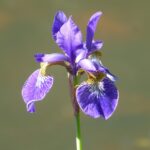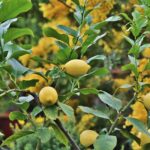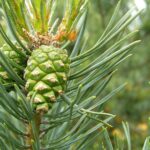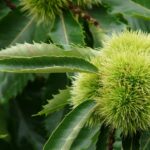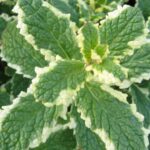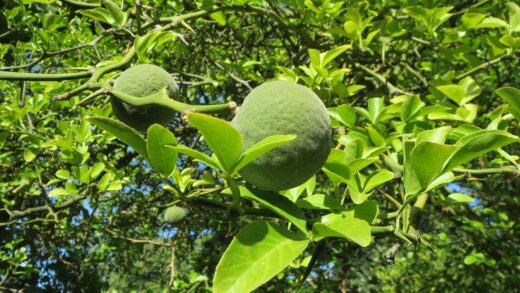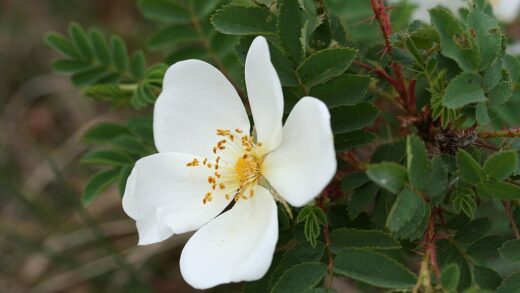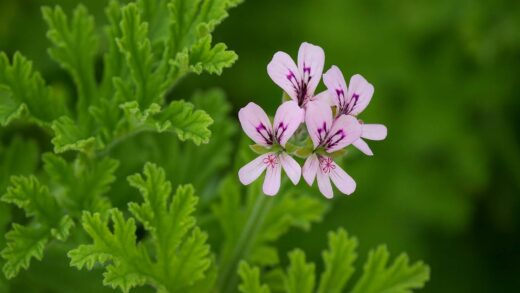Successfully guiding a Japanese ornamental cherry through the winter months is crucial for ensuring its long-term health and the splendor of its spring bloom. While many cultivars are quite hardy, they are not impervious to the challenges that winter can present, including harsh temperatures, desiccating winds, and potential damage from snow and ice. Proper winter preparation, especially for young or newly planted trees, involves a series of proactive steps taken in the autumn to protect the tree and help it enter its dormant period in the best possible condition. This forethought ensures the tree can withstand the rigors of the cold season and emerge in spring ready for vigorous growth.
The process of winterization begins in the autumn as the tree prepares for dormancy. One of the most important steps is to ensure the tree is well-hydrated before the ground freezes. A deep, thorough watering in late autumn, after the leaves have dropped but before a hard freeze, provides the roots with a reservoir of moisture to draw upon throughout the winter. This is particularly important in regions with dry winters or for trees exposed to windy conditions, as moisture can be lost through the bark even when the tree is dormant.
Young trees, with their thin bark and less established root systems, are particularly vulnerable to winter damage. Their trunks are susceptible to sunscald, a condition where the bark warms up on a sunny winter day and then freezes rapidly at night, causing it to crack and split. This damage can be prevented by wrapping the trunk with a commercial tree wrap or a plastic tree guard. This protective layer insulates the bark and reflects the sun, keeping the trunk temperature more stable.
Mulching is another key component of winter care. Applying a fresh layer of organic mulch, such as wood chips or shredded leaves, around the base of the tree after the first light frost helps to insulate the root system. This mulch layer helps to moderate soil temperature fluctuations, preventing the repeated freezing and thawing that can damage shallow roots. It also helps to conserve the moisture provided by the late-autumn watering, ensuring it remains available to the tree throughout the winter.
By taking these preparatory steps, you provide your Japanese ornamental cherry with the protection it needs to navigate the dormant season safely. The goal is not to prevent the tree from experiencing winter, which is a necessary part of its life cycle, but to mitigate the most extreme and potentially damaging aspects of the season. A well-wintered tree is one that will break dormancy in the spring with its energy reserves intact, ready to produce the magnificent floral display that makes it such a beloved garden treasure.
More articles on this topic
Preparing the tree for dormancy
The transition into winter dormancy is a natural process for the ornamental cherry, but several actions in the autumn can help ensure it goes smoothly. As the days shorten and temperatures drop, the tree begins to slow its metabolic processes. It is crucial during this time to cease all fertilization. Applying fertilizer, especially those high in nitrogen, late in the season can stimulate new growth that will not have sufficient time to harden off before the first hard freeze, making it extremely vulnerable to being killed by the cold.
Sanitation is an important pre-winter task, especially for disease prevention. After all the leaves have fallen from the tree, they should be raked up and removed from the area. Fallen leaves can harbor the overwintering spores of fungal diseases like cherry leaf spot and brown rot. Removing this debris reduces the likelihood of these diseases re-infecting the tree in the following spring, giving it a cleaner, healthier start to the new growing season.
A final inspection of the tree before winter sets in is a wise practice. Look for any dead, broken, or diseased branches that may have been missed earlier in the season. Pruning these out before heavy snow or ice can accumulate helps to prevent them from breaking and potentially tearing healthy bark from the tree. However, major structural pruning should be avoided at this time; save that task for late spring or summer after the tree has flowered.
Ensuring the tree enters winter with adequate moisture is perhaps the most critical preparatory step. If autumn has been dry, provide a deep and thorough watering a few weeks before the ground is expected to freeze. This allows the tree’s root system and tissues to become fully hydrated. A well-hydrated tree is much more resilient to the desiccating effects of cold, dry winter winds, which can draw moisture out of the branches and buds, a phenomenon often referred to as winter desiccation.
More articles on this topic
Protecting young trees
Young Japanese ornamental cherry trees, typically those in their first three years after planting, require special attention to protect them from winter’s harshness. Their bark is still thin and not yet fully developed, making them highly susceptible to a condition called sunscald. This occurs when intense winter sun heats the bark on the south or southwest side of the trunk during the day, which then rapidly refreezes at night, causing the bark to split vertically. These wounds can be entry points for diseases and insects.
To prevent sunscald, it is highly recommended to wrap the trunks of young trees in the late autumn. Commercial tree wrap, which is a type of crepe paper, or plastic tree guards can be used. The wrap should be started at the base of the tree and wound upwards, overlapping each layer by about one-third, up to the first set of main branches. The wrap should be snug but not tight and should be removed promptly in the spring to allow the bark to breathe and grow.
Small mammals like rabbits and voles can cause significant damage to young trees during the winter when other food sources are scarce. They often chew on the tender bark at the base of the trunk, which can girdle the tree and kill it. Installing a physical barrier, such as a plastic tree guard or a cylinder of hardware cloth (wire mesh) around the base of the trunk, is the most effective way to prevent this type of damage. The guard should extend from below the soil line up to a height above the expected snow depth.
For very young or marginally hardy cultivars planted in exposed, windy locations, constructing a temporary windbreak can offer additional protection. This can be as simple as driving a few stakes into the ground on the windward side of the tree and stretching burlap between them. This barrier helps to deflect the worst of the cold, drying winds, reducing the risk of winter desiccation and damage to the branches and dormant flower buds.
The importance of mulching
Mulching is a simple yet profoundly effective technique for winter protection. The primary purpose of winter mulching is not to keep the soil warm, but rather to keep it consistently cold. A thick layer of mulch acts as an insulator, moderating the fluctuations in soil temperature. It prevents the ground from rapidly freezing and thawing during winter warm spells, a cycle that can heave the soil and damage the tree’s fine, shallow feeder roots.
The best time to apply winter mulch is in the late autumn, after the ground has experienced its first light frost but before it freezes solid. Applying it too early, when the ground is still warm, can delay the tree’s entry into full dormancy and may attract rodents seeking a warm place to nest for the winter. A two- to four-inch layer is generally sufficient for providing the necessary insulation for the root system.
A wide variety of organic materials can be used for mulch, with wood chips, shredded bark, pine needles, or shredded leaves being excellent choices. These materials not only provide insulation but will also slowly decompose over time, adding valuable organic matter and nutrients to the soil. As with mulching during the growing season, it is essential to keep the mulch pulled back a few inches from the tree’s trunk to prevent moisture buildup against the bark, which can lead to rot.
In the spring, as the ground begins to thaw, the thick winter mulch layer may need to be raked back slightly from the base of the tree. This allows the soil to warm up more quickly and encourages the tree to break dormancy and begin its new season of growth. Leaving a very thick layer in place can delay this process by keeping the soil cooler for longer than necessary.
Managing snow and ice loads
While a picturesque blanketing of snow is generally not harmful to a Japanese ornamental cherry, heavy, wet snow or layers of ice can pose a significant risk. The weight of accumulated snow and ice can put immense strain on the branches, leading to bending, splitting, and breaking. This is particularly true for cultivars with more upright or vase-like branching habits, where snow can collect in the crotches of the branches.
If a heavy, wet snow has fallen, you can gently remove some of the weight from the branches. Use a soft broom or a pole with a soft cloth on the end, and gently push upwards from below the branches to dislodge the snow. Avoid shaking the branches or pulling downwards, as this can increase the stress and cause them to snap. Never try to remove snow from a tree that is already laden with ice, as the branches will be frozen and extremely brittle.
Ice storms are one of the most damaging winter weather events for trees. The glaze of ice can increase the weight on a branch by up to 30 times, making breakage almost inevitable. Unfortunately, there is very little that can be done to protect a tree during an ice storm. The best course of action is to wait until the storm has passed and the ice has melted naturally. Attempting to remove the ice by breaking or melting it will almost certainly cause more harm than good.
After a severe snow or ice event, inspect the tree for damage once it is safe to do so. Any broken branches should be pruned off cleanly to prevent further tearing of the bark and to create a wound that the tree can seal more effectively. Make a proper pruning cut just outside the branch collar. If large, major limbs have been damaged, it may be advisable to consult a certified arborist to assess the tree’s structural integrity and perform the necessary corrective pruning.









